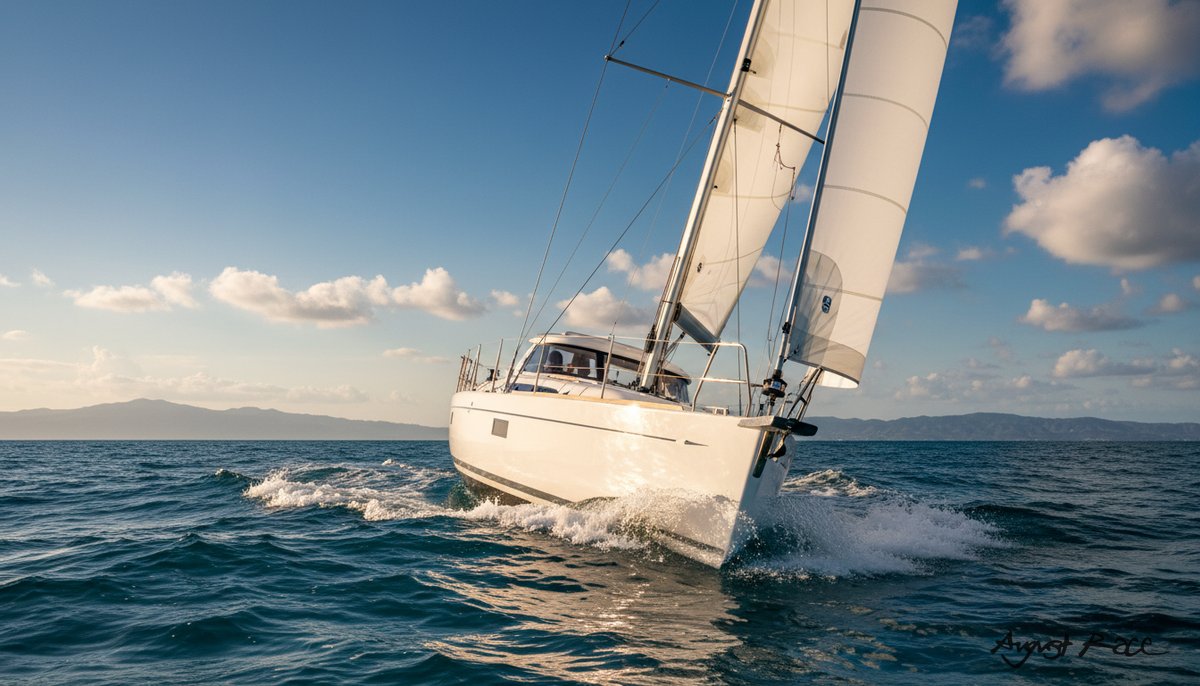How August Race GRP Sealer UV Delivers Scalable GRP UV Protection for Busy Marinas
A season on the pontoon: why UV protection for GRP matters to marina managers
First light at our docks is a checklist in motion. Our berths turn over, fuel docks wake up, and crews set up washdown lanes while we triage work orders. By mid-morning, the sun is high and so is the exposure. GRP hulls and superstructures sit under constant UV and salt -- day after day, tidal cycle after tidal cycle.
As marina managers, we see the pattern across dozens or hundreds of boats: chalking on the gelcoat, color fade on cabin tops, and that dulling haze that creeps in faster than owners expect. Left unmanaged, UV and contaminants accelerate surface degradation. The result is more frequent polishing, longer yard time, higher labor hours, and unhappy calls from owners who want “showroom” gloss on their visiting yachts.
The problem is systemic, not individual. Protecting a fleet means scaling a process, not just shining one boat. We need GRP UV protection that holds gloss, sheds salt and grime, and reduces repetitive work without slowing our schedule. That’s why we standardized on August Race GRP Sealer UV -- a product designed to make protection repeatable across a busy facility.
What August Race GRP Sealer UV is and why it fits fleet-scale maintenance
August Race GRP Sealer UV is a purpose-built fiberglass sealant for GRP surfaces. It’s a biodegradable marine sealer formulated with UV-stable polymers to help preserve appearance and surface integrity under marine conditions. For our operation, this matters because it supports both presentation standards and turnaround targets.
From a workflow perspective, crews value its simple, efficient process: straightforward application, quick wipe-off, and a fast path back to service. Lower-VOC chemistry and a biodegradable formulation help us align with environmental expectations on the water, while keeping our teams comfortable during application. The product also plays well with the routines already in our yards -- machine polishing, pressure washing, and scheduled inspections slot in without retooling our whole playbook.
Because marinas operate under compliance and community scrutiny, using an eco-friendly marine surface sealer adds credibility to our stewardship message. It helps us show we’re proactive about waterway health while maintaining a high standard of finish for owners and charter operators.
Performance you can measure: UV defence, gloss retention and hydrophobic action
For procurement and planning, we track the same indicators season after season: color fastness, gloss readings, and time between full-detail cycles. We also log washdown effort after a week on exposed berths, and the frequency of owner complaints about surface appearance.
While results vary by vessel and usage, GRP surfaces treated with August Race GRP Sealer UV have resisted the typical chalking and discoloration we expect from untreated gelcoat under the same exposure. In discussions with our teams, the comparative phrase we use is simple: untreated GRP asks for correction sooner, treated GRP holds presentation longer. This helps when we’re explaining value to owners and justifying product selection to our finance colleagues.
Equally important is how the coating behaves day to day. As a marine surface hydrophobic coating, it sheds water, salt, and light grime more readily. Rinse-downs are faster, detergents go farther, and drying and inspection after washdowns take less time. Across a fleet, those saved minutes per boat compound into extra capacity in peak weeks.
To ground decisions in operations rather than anecdotes, we recommend tracking:
- Gloss readings (GU) at set checkpoints -- initial, 30-day, 60-day.
- Washdown time per boat before/after application.
- Intervals between corrective polishing.
- Owner satisfaction notes tied to finish.
For budgeting -- not as a product claim -- consider this planning model: if your average polish interval is 10–12 weeks on exposed berths, extending that interval even modestly reduces rework and frees staff. Build a conservative model, validate with your own logs, and expand based on your data.
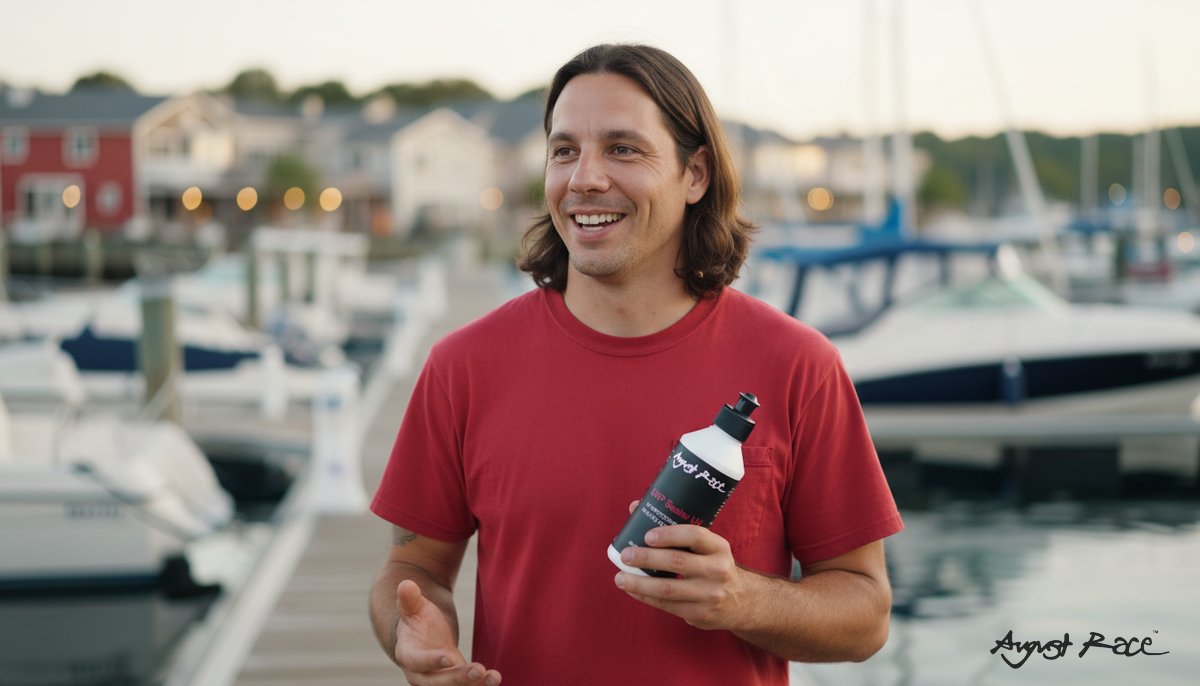
Applying the sealer at scale: a marina manager’s step-by-step workflow
Scaling a hydrophobic GRP coating across many boats is about schedule design, repeatable steps, and clean handoffs between shifts. Here’s the workflow that keeps our team consistent.
1) Schedule and batch
- Group vessels by size, berth location, and service level (transient vs. seasonal).
- Block application windows adjacent to washdown and inspection to minimize moves.
- Assign crews by hull length bands so coverage rates remain predictable.
2) Surface prep that respects the clock
- Start with a thorough wash to remove salt, soot, and organic film. For a dependable pre-seal clean, our crews use August Race Boat Wash Pro.
- Inspect gelcoat. If oxidation is light, a quick refining polish is enough. For older, porous gelcoat or heavy chalking, complete compounding and finishing stages before sealing.
- Ensure the surface is clean and dry. Any oils or residues reduce bonding and can lead to uneven gloss.
3) Application sequence (keep it reproducible)
- Review the product label and technical data sheet for the latest guidance. Standardize this in a one-page SOP for crews.
- Choose method by area: machine application on large flat panels; hand applicators or microfiber for trim, hard-to-reach zones, and around fittings.
- Apply thin, even coats. Avoid overloading pads -- less product, more control.
- Observe dwell/cure guidance from the manufacturer. In our yard, we plan work so boats remain staged and undisturbed during the initial set.
- Coverage planning: conduct a small test on a representative panel. Record how much product covers a measured area on that gelcoat. Use that real-world yield to forecast stock for your fleet.
4) Drying windows and return-to-berth
- Protect fresh applications from dew, rain, or heavy mist during the initial cure. Use indoor bays or canopy time when the forecast is marginal.
- For porous gelcoats and older hulls, allow additional set time and consider a second light coat after inspection.
- Before release, perform a quick tactile and visual check: no grabby areas, no hazing, even sheen.
5) Quality control across crews
- Use a simple QC checklist per boat: prep complete, application time, lot number, cure check, gloss reading, photos.
- Capture photos in the same light and angle for reliable comparisons over time.
- Log washdown time and detergents used at the first post-service clean -- this feeds your ROI analysis later.
6) Safety and housekeeping
- Brief staff on PPE per SDS and product label.
- Keep pads and cloths organized to avoid cross-contamination with compounding residues.
- Dispose of waste materials in line with marina policy and local regulations.
With these steps, teams deliver a high gloss marine sealer for fiberglass result while keeping boats moving through our schedule without bottlenecks.
Cost, training and sustainability: answering the marina manager’s objections
We all share the same concerns: Will this increase material spend? How long to train crews? Will compliance reporting get harder? Addressing these upfront helps procurement move faster.
- Total cost of ownership: Consider product cost per season per berth against labor hours saved from fewer corrections, shorter washdowns, and fewer rework callbacks. Use your own logs to model conservative savings; validate during a pilot.
- Training: Most crews get consistent results after a short briefing and 1–2 supervised shifts. A simple SOP, plus a QC checklist and photo examples, accelerates onboarding for new seasonal staff.
- Sustainability and compliance: As a biodegradable marine sealer with reduced VOCs, August Race GRP Sealer UV supports our environmental commitments on the water. Always consult the current Safety Data Sheet (SDS) and follow local disposal and spill-prevention rules; align with your harbor master or compliance officer for documentation.
When stakeholders see a clear SOP, a training plan, and an environmental footing, approval tends to follow the data.
Case studies from our docks: real results after switching to August Race GRP Sealer UV
Large marina with heavy seasonal turnover
Baseline: Frequent gloss complaints at peak season and tight berth rotations made full correction work hard to schedule. Rollout: We chose a 40-boat block across similar GRP profiles and staged work over two maintenance windows. Outcomes: Fewer full polishing cycles were needed during the season, washdowns ran more predictably, and owner feedback on presentation improved. Facilities note: “Standardizing on a single sealer simplified stocking and training; our checklists now look the same across crews.”
Smaller mixed-use yard
Baseline: Mixed GRP -- older fishing vessels and newer cruisers -- meant variable results after washdowns. Rollout: We batched by condition level and applied August Race GRP Sealer UV after correction where needed. Outcomes: Photo logs showed better gloss continuity, and crews reported easier rinsing on high-exposure berths. Operations note: “Batching by condition and using one product made planning simpler, even with a small team.”
Across both sites, we’re continuing long-term monitoring with scheduled gloss checks and maintenance logs. That data feeds capital planning and helps justify a wider rollout.
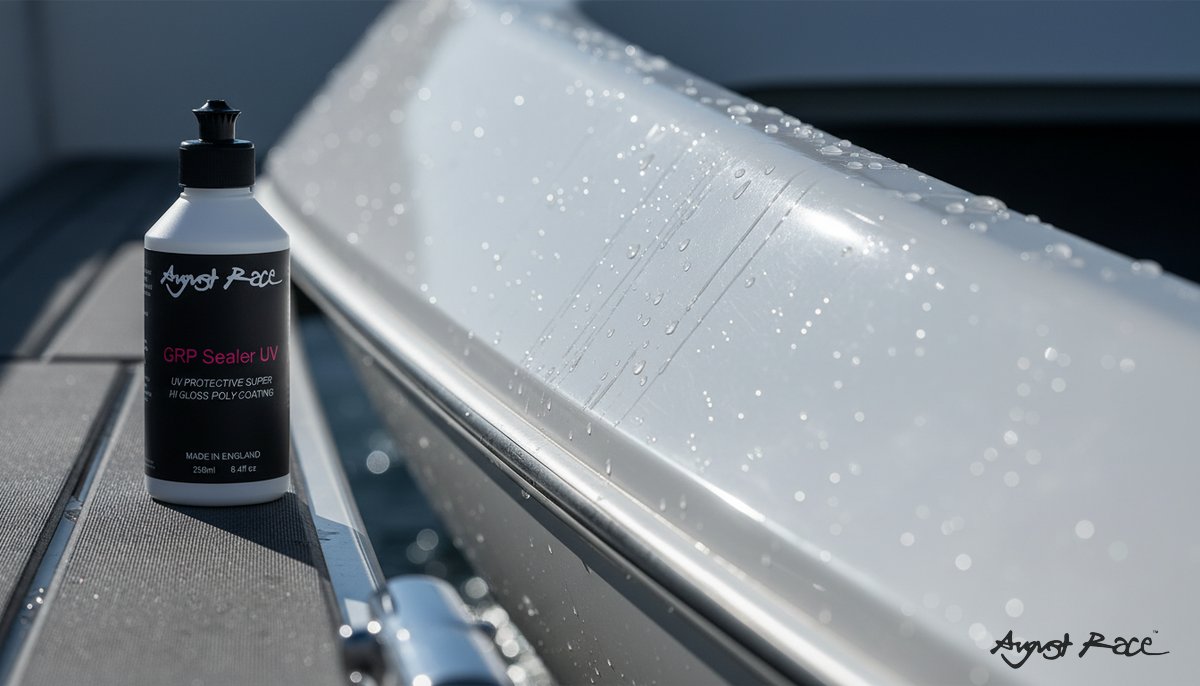
How to pilot August Race GRP Sealer UV in your marina this season
A low-risk pilot turns opinion into evidence. Choose 5–10 representative vessels or one berth block that mirrors your typical exposure and service levels.
Suggested procurement list:
- August Race GRP Sealer UV in sufficient volume for the test area
- Applicator pads and microfiber cloths; masking as needed
- QC tools: gloss meter, photo log template, simple checklist
Action plan timeline:
- Week 1: Prep and baseline measurements (gloss, average washdown time)
- Week 2: Application day(s) and immediate QC sign-off
- Weeks 3–10: Follow-up inspections and washdown metrics; owner feedback capture
Track success by comparing pre- and post-pilot gloss readings, labor hours, and presentation notes. If you’re comparing options for the best UV protection for GRP, a structured pilot gives your board the operational data it trusts. To get started, order directly from the August Race shop or schedule a demo with an August Race representative.
FAQs: quick answers for implementation, performance and environmental concerns
How long does August Race GRP Sealer UV protect fiberglass from UV damage?
Longevity depends on exposure, maintenance routines, and the condition of the gelcoat at application. Many marinas plan seasonal reapplication cycles and then adjust cadence based on gloss readings and washdown logs under their specific conditions.
Is August Race GRP Sealer UV compatible with all gelcoat types and existing marine polishes?
It’s designed for GRP/gelcoat surfaces and works alongside standard marine polishing workflows. For best results, remove residues from previous products during prep and consult the technical data sheet if you’re layering over specialty coatings or waxes.
What are the recommended coverage and labour estimates when applying the sealer across multiple vessels?
Coverage varies with porosity and application method, so we advise running a small measured test panel to calculate your own yield per crew and surface type. Record time-on-task for wash, prep, and application during the pilot to build reliable labor estimates that reflect your berth mix.
How does the sealer’s biodegradability affect disposal and environmental compliance at a marina?
Biodegradability and reduced VOCs support a lower-impact profile, but you should still follow the SDS and local regulations for storage, use, and disposal. Align with your harbor master or environmental officer to document procedures and ensure compliance with any waterway-specific rules.
To move from research to results, run a pilot and let your metrics confirm the GRP UV protection approach that fits your operation.
About the Author
August Race Team
The August Race professional team brings decades of marine industry expertise and product development knowledge.
Get Expert Tips
Subscribe for marine care insights and product updates from industry professionals.
No spam. Unsubscribe anytime.
You May Also Like
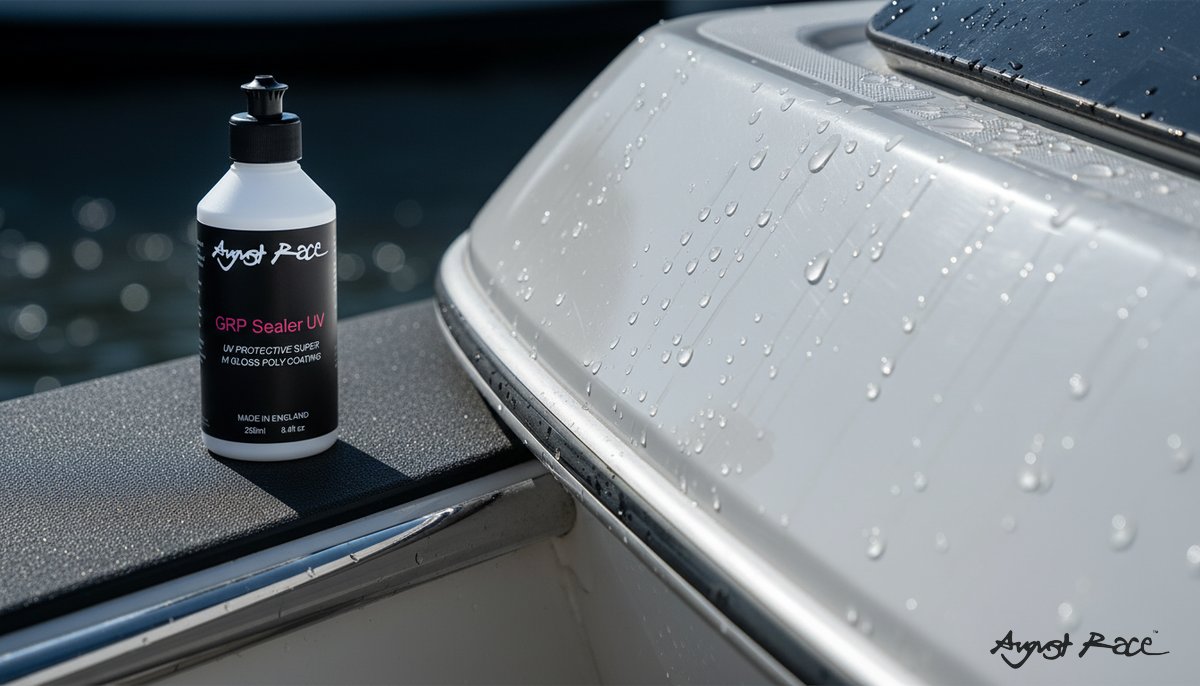
GRP Sealer UV for Marinas: Hi-Gloss, UV Protection
Seal fiberglass from UV across your fleet. August Race GRP Sealer UV delivers a hi-gloss finish, reduces maintenance, and streamlines marina operations.
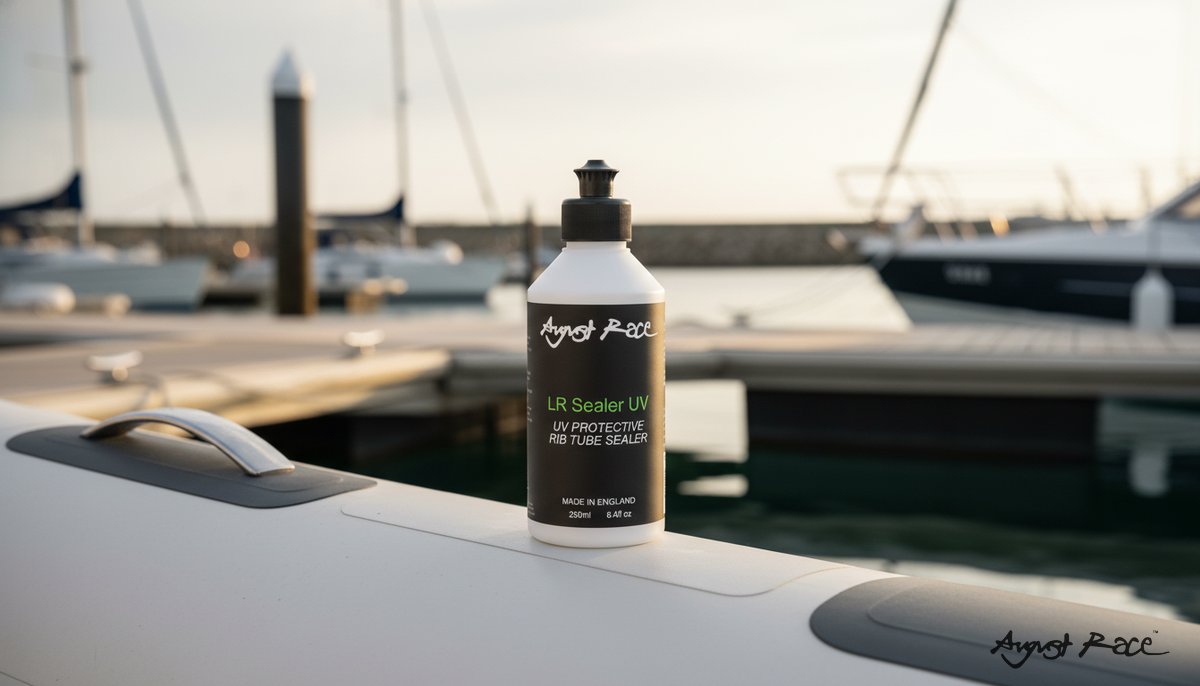
RIB UV Protection: How LR Sealer UV Protects Tubes
Guide to RIB UV protection using LR Sealer UV -- PVC tube sealer and Hypalon UV treatment to prevent UV cracking and reduce cleaning.
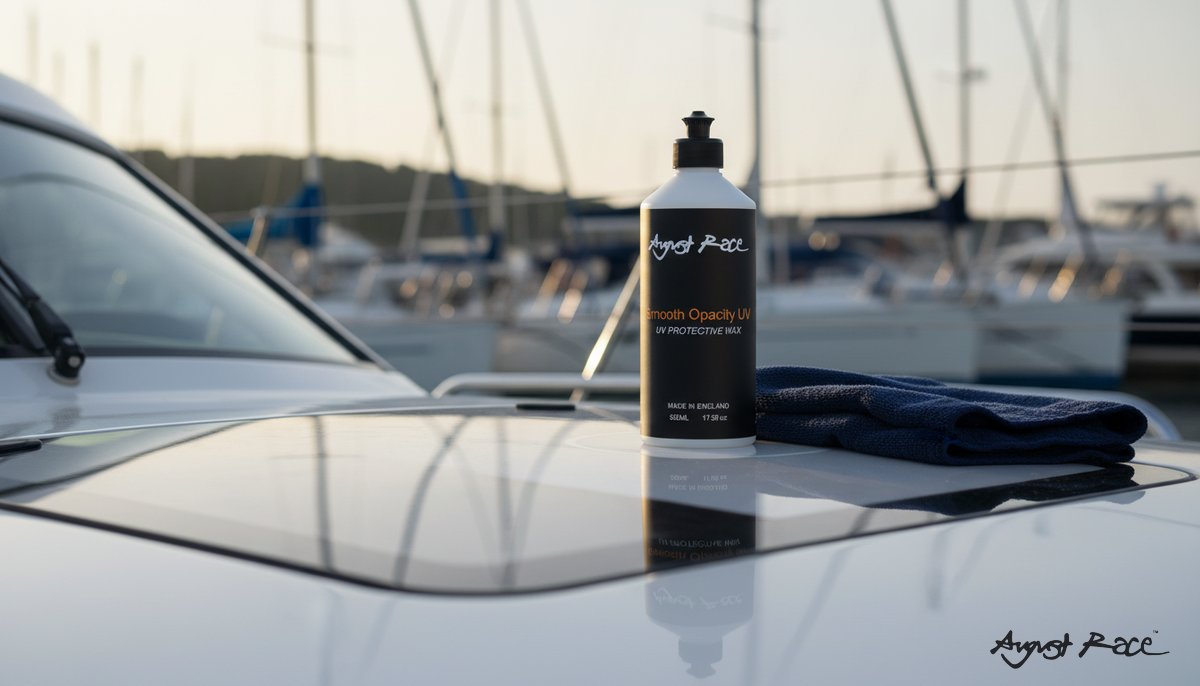
Smooth Opacity UV: Pro UV Protection Boat Wax Guide
A marine tech’s guide to Smooth Opacity UV -- UV protection boat wax and hydrophobic boat polish for gelcoat. Improve gloss, repel water, and extend service...
